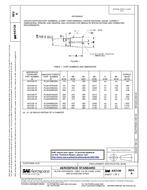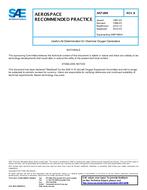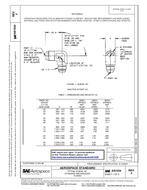Click here to purchase
This ARP discusses design philosophy, system and equipment requirements, and ambient conditions and design considerations for systems within the ATA 100 Specification, Chapter 21 (Reference 1). This chapter is principally concerned with passenger and crew environment and the air conditioning systems that maintains this environment. The airplane air conditioning system comprises that arrangement of equipment, controls and indicators that supply and distribute air to the occupied compartments for ventilation, pressurization, and temperature and moisture control. The principal features of the system are: a. A supply of fresh air from at least two sources with independent control valves b. A means for heating c. A means for cooling (air or vapor cycle units and heat exchangers) d. A means for removign excess moisture from the air supply e. A ventilation subsystem f. A temperature control subsystem g. A presure control subsystem Other system components for treating cabin air such as filtration and humidification would be included, as would the ancillary functions of equipment cooling and cargo compartment conditioning. The interface with the major associated system, the pneumatic system (Chapter 36 of ATA 100), is at the inlet of the air conditioning shutoff valves. This boundary definition aligns with that in the ATA 100 Specification.abin air such as filtration and humidification would be included, as would the ancillary functions of equipment cooling and cargo compartment conditioning. The interface with the major associated system, the pneumatic system (Chapter 36 of ATA 100), is at the inlet of the air conditioning shutoff valves. This boundary definition aligns with that in the ATA 100 Specification.
Product Details
- Published:
- 08/01/1991
- File Size:
- 1 file , 340 KB


